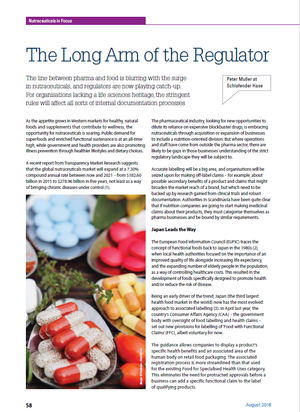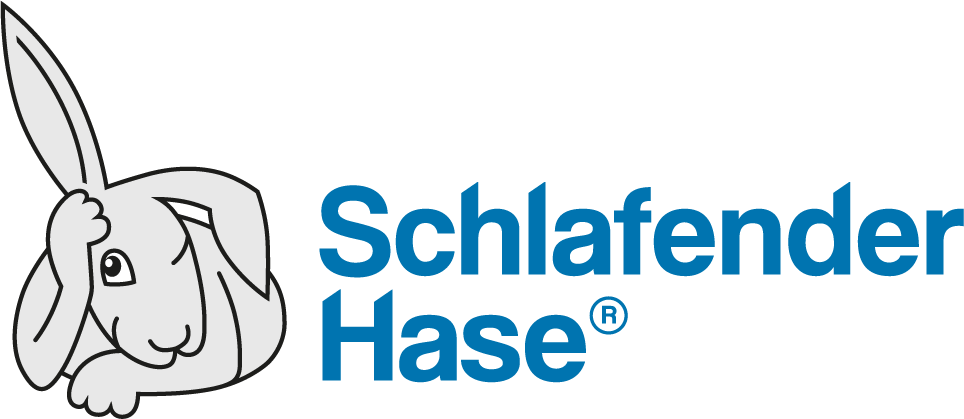
From Pharmaceutical Manufacturing and Packing Sourcer August 2016
As the appetite grows in Western markets for healthy, natural foods and supplements that contribute to wellness, the opportunity for nutraceuticals is soaring. Public demand for superfoods and enriched functional sustenance is at an all-time high, while government and health providers are also promoting illness prevention through healthier lifestyles and dietary choices.
A recent report from Transparency Market Research suggests that the global nutraceuticals market will expand at a 7.30% compound annual rate between now and 2021 – from $182.60 billion in 2015 to $278.96 billion in five years, not least as a way of bringing chronic diseases under control (1).
The pharmaceutical industry, looking for new opportunities to dilute its reliance on expensive blockbuster drugs, is embracing nutraceuticals through acquisition or expansion of businesses to include a nutrition-oriented division. But where operations and staff have come from outside the pharma sector, there are likely to be gaps in those businesses’ understanding of the strict regulatory landscape they will be subject to.
Accurate labelling will be a big area, and organisations will be seized upon for making off-label claims – for example, about possible secondary benefits of a product and claims that might broaden the market reach of a brand, but which need to be backed up by research gained from clinical trials and robust documentation. Authorities in Scandinavia have been quite clear that if nutrition companies are going to start making medicinal claims about their products, they must categorise themselves as pharma businesses and be bound by similar requirements.
Japan Leads the Way
The European Food Information Council (EUFIC) traces the concept of functional foods back to Japan in the 1980s (2), when local health authorities focused on the importance of an improved quality of life alongside increasing life expectancy, and the expanding number of elderly people in the population, as a way of controlling healthcare costs. This resulted in the development of foods specifically designed to promote health and/or reduce the risk of disease.
Being an early driver of the trend, Japan (the third largest health food market in the world) now has the most evolved approach to associated labelling (3). In April last year, the country’s Consumer Affairs Agency (CAA) – the government body with oversight of food labelling and health claims – set out new provisions for labelling of ‘Food with Functional Claims’ (FFC), albeit voluntary for now.
The guidance allows companies to display a product’s specific health benefits and an associated area of the human body on retail food packaging. The associated registration process is more streamlined than that used for the existing Food for Specialised Health Uses category. This eliminates the need for protracted approvals before a business can add a specific functional claim to the label of qualifying products.
Under the new FFC guidelines in Japan, labelling must include cross-category quality labelling items as well as 16 specific items, ranging from ingredients to recommended daily intake, and from instructions and precautions to various safety notices. The CAA has also revised its regulations for Food with Nutrient Functional Claims to increase product eligibility, expand the list of eligible nutrients and to include fresh foods.
Regulatory Ripple Effect
In other markets, it is early days in regulatory terms, and requirements around nutraceuticals vary internationally. In the EU, products that claim to be a ‘nutraceutical’ must be certified by the European Food Standards Authority. In the US, by contrast, products do not (yet) have to pass a series of stringent government tests, as long as they are not claiming to treat or prevent a specific disease (4).
But the likelihood is that the authorities will have to clamp down. The public will expect it, and there may be risks to consumers if they are not given adequate and consistent guidelines on when and how to use a nutraceutical product, or about the possible contraindications if they are already taking other dietary supplements.
Health Canada is among the Western authorities that has been considering the regulatory imperative and challenges (5).
Questions it has been ruminating include how nutraceuticals/ functional foods should be defined; whether such products ought to remain as either foods or drugs under the Food and Drugs Act; what kinds of health claims (if any) should be allowed on food labels; and what standards of evidence would be necessary and sufficient to prove a health benefit.
India has also been consulting and drafting regulations (6). As well as serving its own market, India will have seen the opportunity to provide nutraceuticals to the world market, because of its low costs of production. International nutraceuticals firms are likely to look to this economy to bolster profits in an area of business with greater pressure on pricing (compared to drugs). The signs are that India may take a tough line, too, to engender trust in its products. Earlier this year, the Food Safety and Standards Authority of India ordered companies to follow strict norms in manufacturing and testing of health supplements launched after 2011 (7), based on a draft report.
The overriding dilemma is the extent to which nutraceuticals/ functional foods should be regulated, without compromising the right of consumers to take greater responsibility for their own health.
Food for Thought
In the meantime, guidance on food labelling is being tightened – a further indication that nutraceuticals will not escape without tougher requirements. In the US in May this year, the FDA issued new guidance on food labelling (8), bringing it more in line with Europe. The aim is to create greater standardisation in the way health and nutrition information is presented to the consumer.
The FDA’s new Nutrition Facts label guidance applies to packaged foods, and is designed to make it easier for consumers to make better informed food choices – by ensuring that labelling reflects the latest scientific information. This includes the link between diet and chronic diseases, such as obesity and heart disease. There are new recommended serving sizes, and
a refreshed design which highlights information such as calorie content, portion size and added sugar content. New nutrients must be declared too, including Vitamin D and potassium, to combat associated deficiencies.
Health Canada has issued its own proposed guidance to tighten food controls, which is currently with the industry for comment. Food labelling changes in Europe are further ahead, with new EU requirements needing to be met from December this year. Key changes here include improved legibility of information; clearer and harmonised presentation of allergens (emphasis by font, style or background colour) in the list of ingredients; and legislation around certain nutrition information. All in all, it is a good indication of what is coming for nutraceuticals.
Anticipating Audits
If companies are found to fall short of the requirements, they will have to take prescribed corrective and preventative action. This will include proving that they have, or plan to, develop a system for addressing non-conformances, customer complaints, product failures, product recalls, process deviations, audits, regulatory inspections and trends from overall performance and product quality monitoring.
It is important, therefore, that firms start adopting processes that can catch unauthorised claims or ingredient substitutions to ensure that costly mistakes are not made on product labels and packaging. Waiting until a problem arises is a risky strategy. Now is the time for nutraceutical companies to be putting comprehensive quality measures in place – something they can show auditors, which spans the whole production chain, encompassing regulatory affairs to printing. It is the absence of rigour that will lead to omissions and errors.
Regulators need to control not just health claims, either – growing public consciousness means customers are becoming more demanding in their expectations to know every aspect of a product’s origins and its social, ethical and environmental credentials. In January, Brazil’s Ministry of Justice issued fines totalling $3 million to big names, including Nestlé and PepsiCo, for failing to disclose that their goods contained genetically modified organisms.
Lightening the Load
Managing changes to labelling is a full-time job that should not be underestimated. In heavily regulated industries such as life sciences, chemicals and cosmetics, Regulatory Affairs teams work flat out to check and double-check every detail, aware that the slightest misprint or mistranslation could have serious ramifications.
It is no coincidence that the food and nutraceuticals industries are now beginning to look to these more experienced sectors – particularly pharma – for guidance on best practices – and as a source of regulatory professionals as they seek to bolster their teams.
Emerging labelling requirements exceed the scope that an artwork team, supplier quality function, print supplier or marketing department can realistically handle. They threaten to take time away from other important tasks, and come with an expectation that those responsible will know how to deliver the specifications needed.
The pharma industry has 20-30 years’ experience of managing complex control processes of the kind now needed in other markets, so provides a valuable reference point. One of the techniques a lot of companies have adopted is an automated approach to label checks, using sophisticated text verification – a system which can very quickly pick up even the tiniest discrepancies between regulatory text, artwork briefs and packaging artwork, irrespective of the font or language in use.
Although real people should never be distanced entirely from critical checks, reliable automation can save on several rounds of laborious proofreading and accelerate time to market, freeing up skilled resources for more specialist work. It is these kinds of labour-saving techniques that nutraceutical and food industries will need to consider as they prepare for what lies ahead.
This article is taken from Pharmaceutical Manufacturing and Packing Sourcer August 2016 © Samedan Ltd
References
1. Global nutraceuticals market to reach US$278.96 bn by 2021 owing to increasing demand for nutritional diet, Transparency Market Research, April 2016. Visit: www. transparencymarketresearch.com/ pressrelease/global-nutraceuticals- product-market.htm
2. Functional foods: The basics, EUFIC, June 2006. Visit: www.eufic.org/ article/en/expid/basics-functional-foods
3. Japan’s new health claims labeling system creates opportunities, USDA FAS GAIN report, August 2015. Visit: gain.fas.usda.gov/recent%20gain%20 publications/japan%E2%80%99s%20 new%20health%20claims%20 labeling%20system%20creates%20 opportunities_tokyo_japan_8-3-2015.pdf
4. Nutraceuticals and the future of intelligent food, KPMG/PMlive.com, September 2015. Visit: www.pmlive. com/pharma_news/ nutraceuticals_and_the_future_of_ intelligent_food_827879
5. Archived policy paper: Nutraceuticals/ functional foods and health claims on foods, Health Canada, June 2013. Visit: www.hc-sc.gc.ca/fn-an/label-etiquet/ claims-reclam/nutra-funct_foods- nutra-fonct_aliment-eng.php
6. Draft food safety and standards (Food or health supplements, nutraceuticals, foods for special dietary uses,
Foods for special medical purpose, Functional foods, and Novel food) regulations, Government of India, Ministry of Health and Family Welfare, Food Safety and Standards Authority of India, 2015. Visit: www.fssai.gov. in/portals/0/pdf/draft_regulation_on_ nutraceuticals_wto_23_07_2015.pdf
7. New FSSAI rules on nutraceuticals may leave companies like Sun Pharma, GSK ailing, The Economic Times, April 2016. Visit: articles.economictimes. indiatimes.com/2016-04-01/ news/71977410_1_supplements-food- safety-notification
8. Visit: www.fda.gov/food/ guidanceregulation/guidance documents regulatory information/labelingnutrition/ ucm385663.htm





